In this post I will demonstrate how to turn on or off the TradingView dark mode.
If you prefer the look of black charts, tool bars and browser interface windows. The TradingView color theme feature offers a quick and convenient method to switch charting color themes.
There two methods for switching between light and dark mode within TradingView. In this post I’ll describe step by step how to use each of these methods. Plus I’ll offer some tips for maintaining your preferred charting setup when switching modes.
Signup for a Essential, Plus+ or Premium TradingView subscription using the link. *New users get $15 towards a new plan.
How do I change my TradingView theme?
TradingView has two charting interface theme types: dark and light modes. By default, TradingView is set for light theme.
Users can change the TradingView theme from light to dark or vice versa through either the right click on chart menu or the “hamburger” menu.
TradingView also includes four other standard color themes: Black, blue, grey and white. These color themes only change the chart appearance not the interface.
Chart colors (along with other chart settings i.e bar type and appearance) can also be customized. Then saved as a template. We’ll discuss this under the ‘Creating a TradingView Template’ section and in the ‘How to change TradingView background color’ sections of this post.
Useful Tip for Themes
Before we dive in on the methods of changing TradingView themes, it is important to mention that changing your theme will alter previously customized chart settings.
All user personalization of price bars: body, borders, wicks, as well as other chart settings such as scale text will all be reverted to default once you switch between light and dark theme modes.
To avoid losing your custom preferences, its a good idea to make a saved theme first with your set preferences. This means if you decide to revert back to the previous theme mode you can re-load your previous settings. Otherwise these will be lost.
You can save your settings by following the “how to save a template” guide below:
Tip 1: Creating a TradingView Template
Before you decide to change to TradingView dark mode, its a good idea to create a template of your previous preferred settings. (These will be lost once you switch from light to dark modes).
The following steps outline how to create a chart template:
Note: If you are using the TradingView mobile app refer to the ‘Creating a TradingView mobile app Template’ section below.
Creating a TradingView Template for browser version
Step 1: Right click on chart > Select settings
Step 2: Click Template dropdown menu at bottom left (see figure below) > select save as .
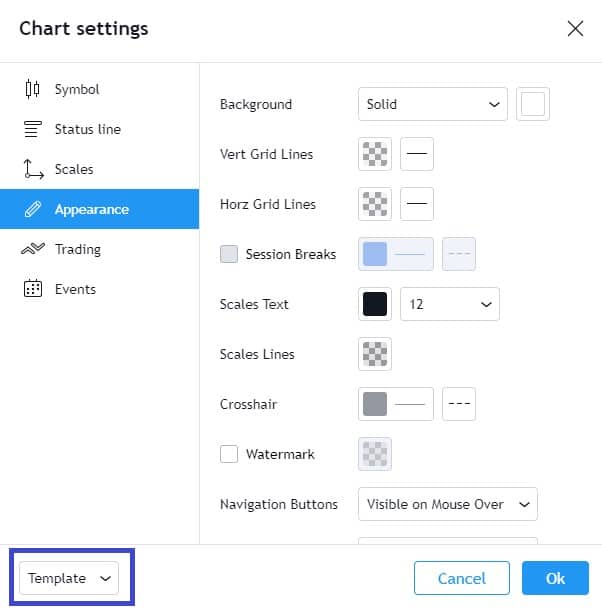
Step 3: Click “OK”
Now if you decide to revert back to your preferred theme mode you can retrieve all your previous chart settings. To load saved template refer to section below.
Creating a TradingView Template for mobile app
Creating a template on the Tradingview app is straight forward and similar to creating a template on the TradingView browser version. To create a template following these steps:
Step 1: in any chart go to the three horizontal dots located in the bottom right hand corner of the app.
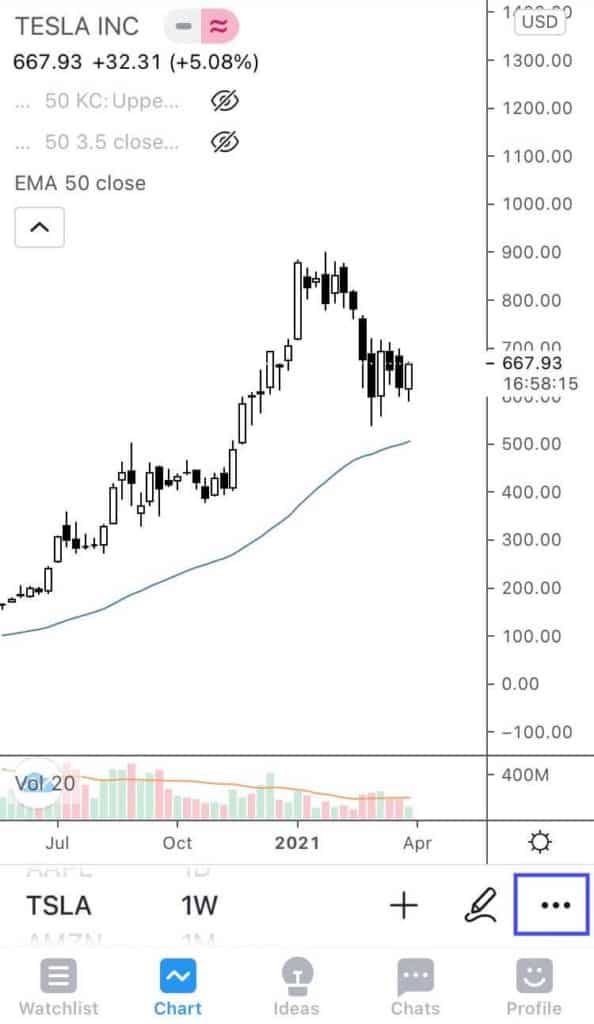
Step 2: Go to ‘Chart Settings’
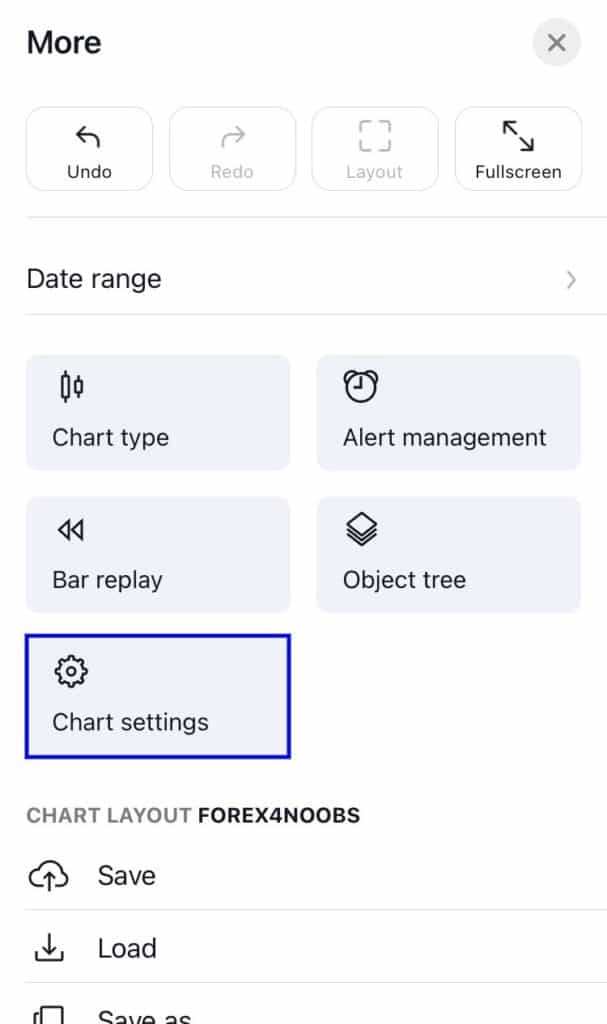
Step 3: In the bottom left hand corner of the ‘Chart settings’ window click on the three horizontal dots.
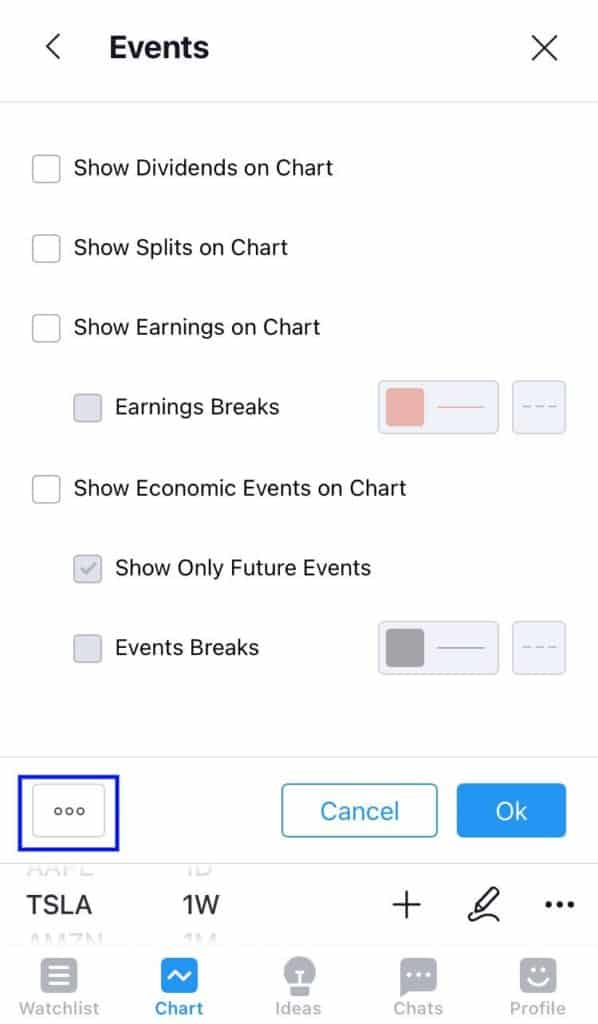
Step 4: To save your current chart settings as a template select ‘Save As’. Give your new template a name. Your new template will now be saved as a template.
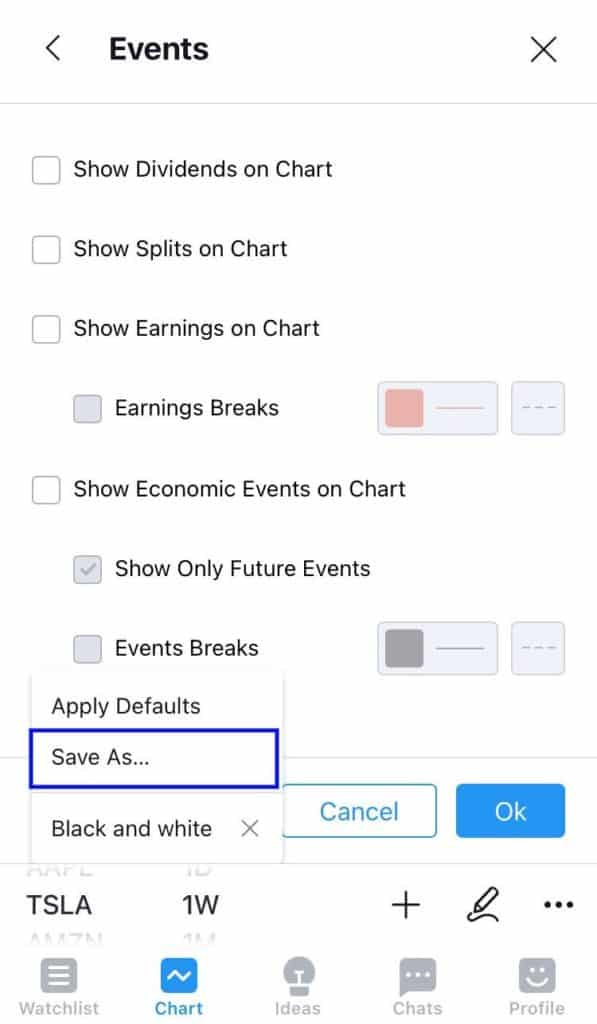
How to load saved template
Note: This process is similar for both browser and mobile app versions.
To retrieve previous chart settings saved as a template:
Step 1: Right click on chart > Select settings
Step 2: Click Template dropdown menu at bottom left > your saved template will be listed. Select your template to load. (see figure below).
Step 4: Click “OK”
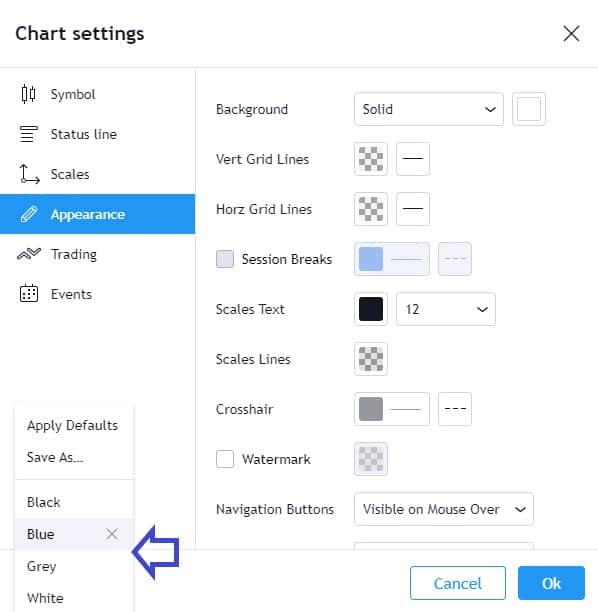
Tip 2: Undo Function
In the event of a mistake, users can easily undo an applied theme using the ‘Undo’ function.
TradingView Undo Function for browser version
The ‘Undo’ button is located on the main toolbar of the chart or keying in CTRL + Z as a shortcut. Your chart mode and settings will revert back to what they were set previously.

TradingView Undo Function for mobile app version
To ‘Undo’ TradingView mobile app. On any chart go to the three horizontal dots in the bottom right hand corner of interface.
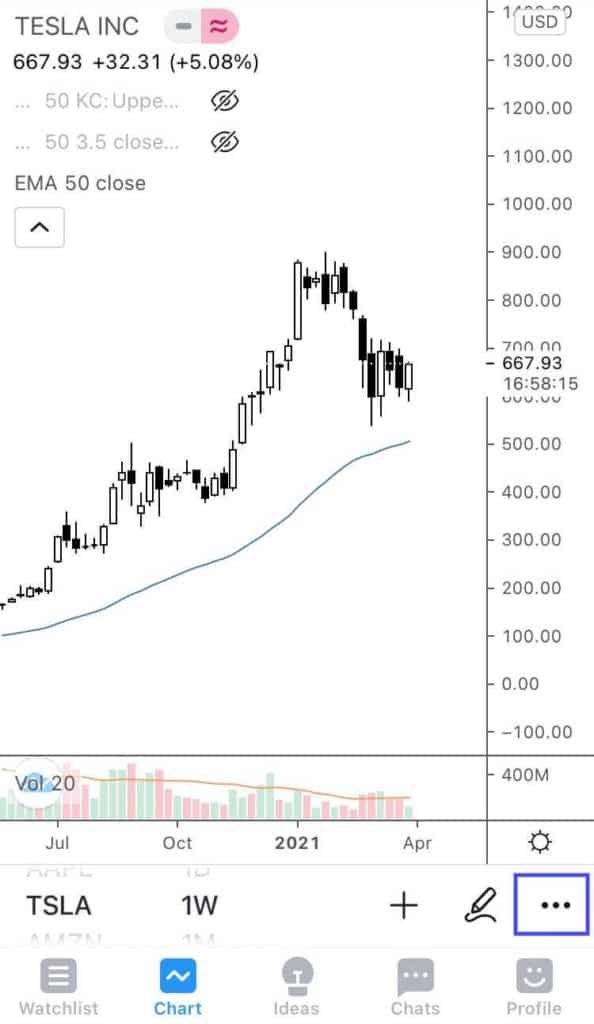
In the top left hand corner of the this chart menu select the ‘Undo’ function.
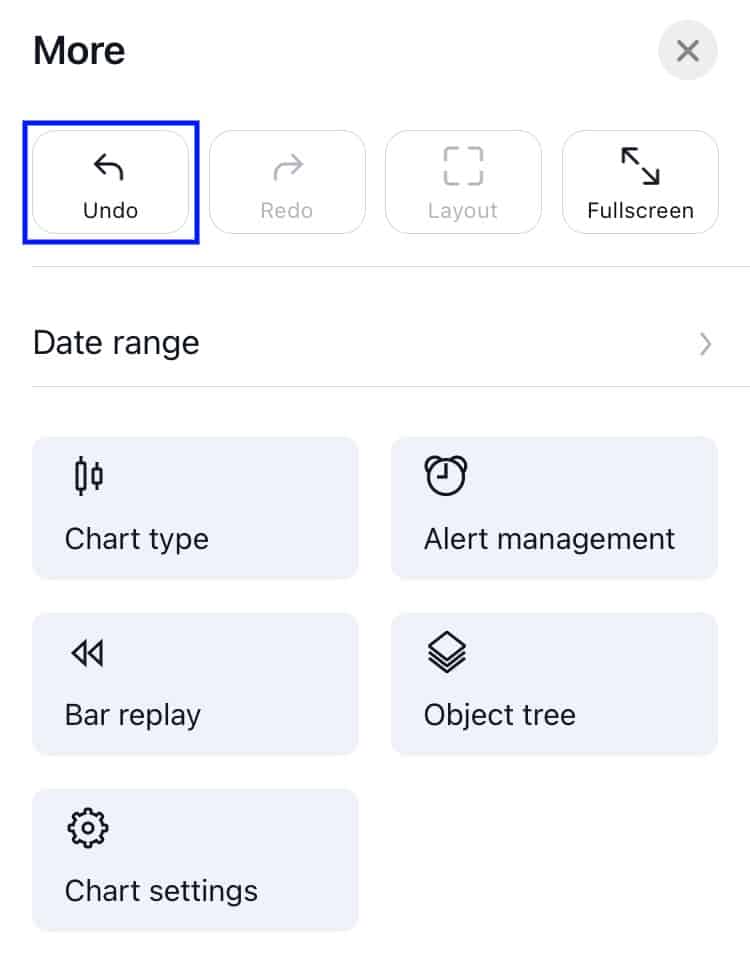
How to turn on or off tradingview dark mode
Method 1: Chart Menu through Right Click
To turn on or off TradingView dark theme, one method is through the right click chart menu.
To access this menu:
- Right click anywhere on your chart
- Hover on Color Theme (See black arrow below)
- A menu will appear
- At the top of this menu you will see two options: Light and Dark (See blue box below)
- Tip!: If you have saved a template (as described above), this template will appear on the section below “Save As” (See black box below).
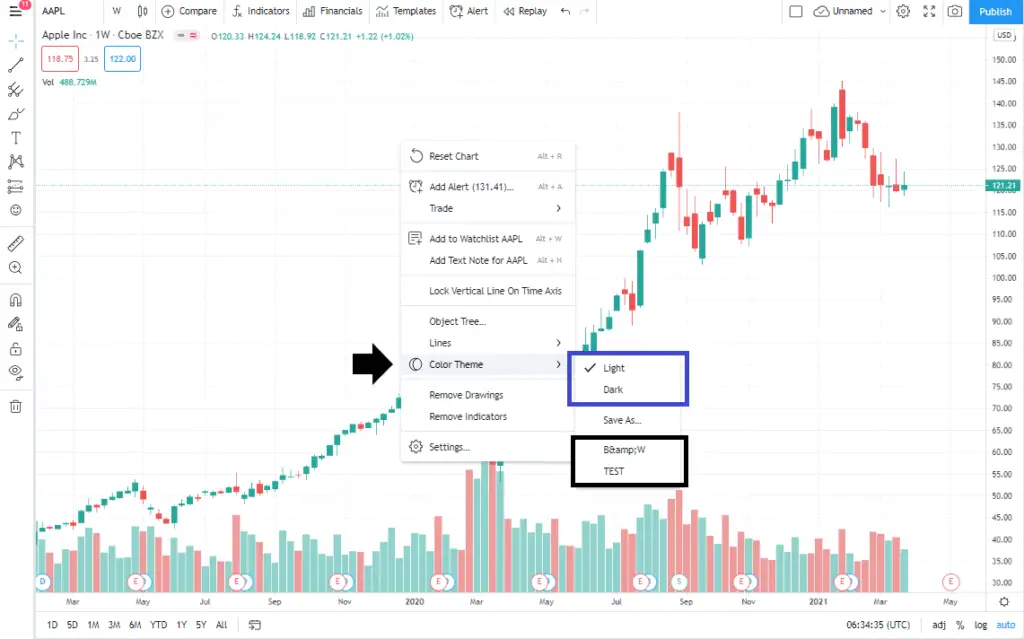
- Select preferred color theme or template
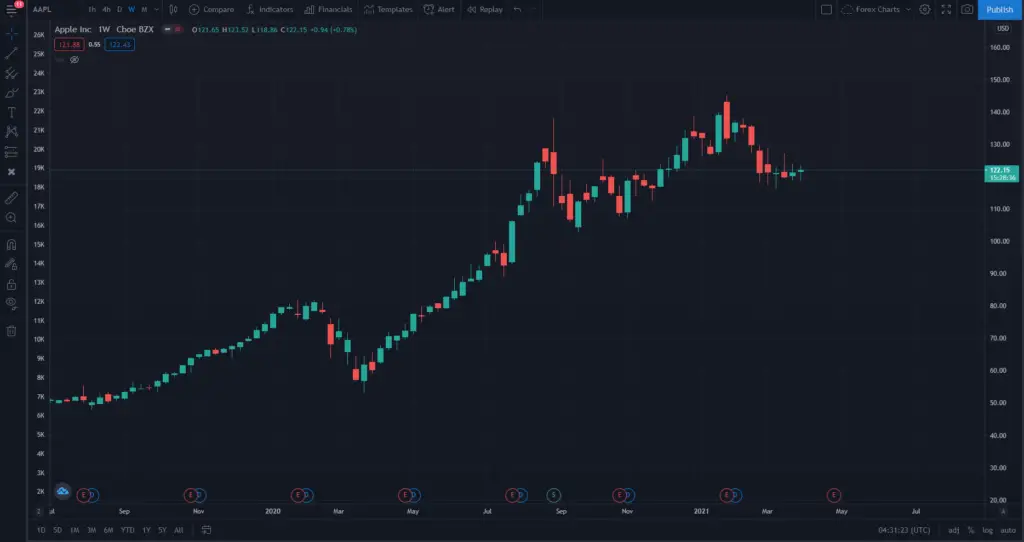
Method 2: “Hamburger”
As a shortcut, TradingView provided a toggle switch that grants easy access to the activate/deactivate dark mode button.
To do this, follow the 2-step guide below:
- Locate the three – stacked line symbol otherwise known as the “hamburger” on the upper left-hand side of the screen.

- Locate the Dark Color theme slider > click to activate

A deactivated dark color theme will be denoted in in gray color – an activated dark color theme is denoted in blue
After clicking the slider a ‘Confirmation’ window will appear. Asking you if you want to change the chart template’s theme also. Remember if you want to save your current chart settings be sure to save a template as described in the ‘Creating a TradingView Template’ section above.
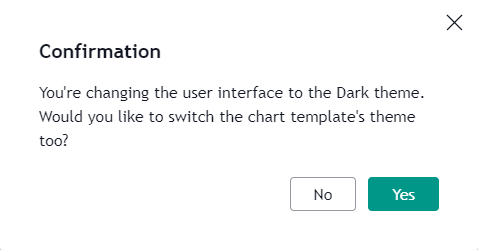
If you select ‘No’ in the confirmation window. Only the browser interface will change to dark mode.
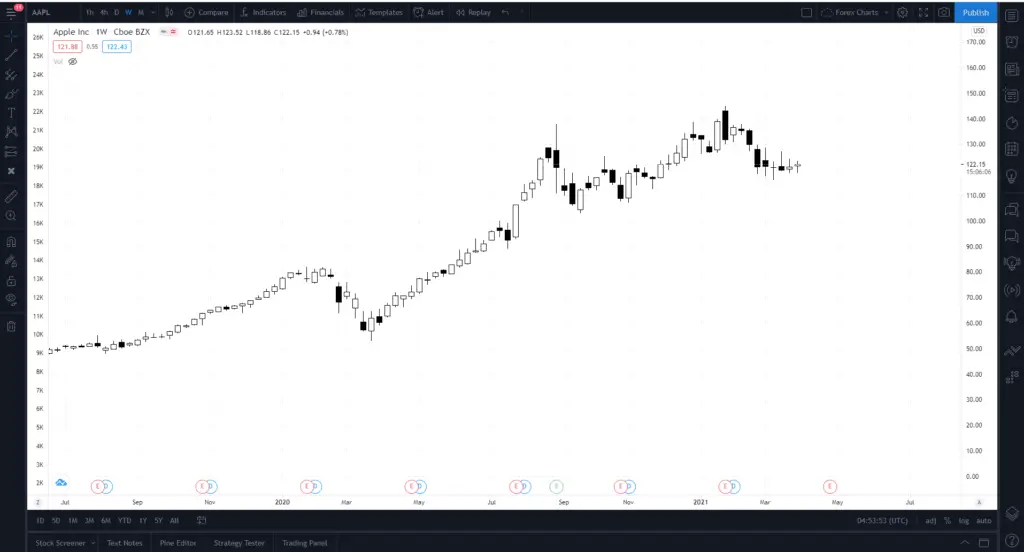
If you select ‘Yes’. the browser interface and chart setting will charge to the dark mode default settings.
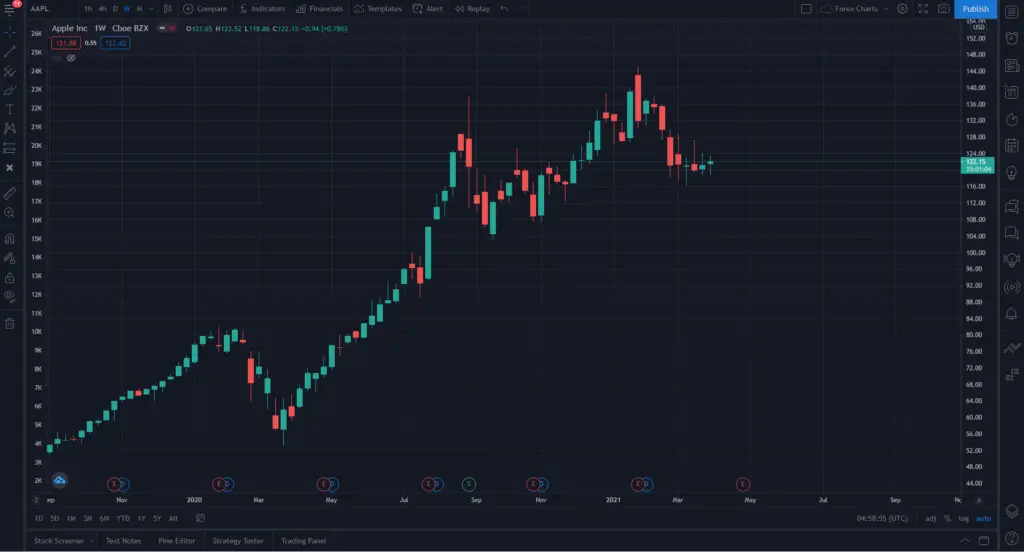
Reverting back to Light Theme
Reverting back to light theme for both methods follows the same procedure.
In the “Hamburger” menu, clicking an activated Dark Theme switch will revert back to light theme.
Note: The activated dark theme toggle is denoted in blue. A deactivated dark theme (or activated light theme) is denoted in gray.
How to change Tradingview app dark mode
In this section, we’ll explain how to switch to TradingView dark mode on the TradingView app.
For iOS and Android devices, refer to this quick guide:
Step 1: Open the TradingView application
Step 2: From the Watchlist, Tap the Profile tab in the bottom right hand corner of the app (see blue box and arrow below).
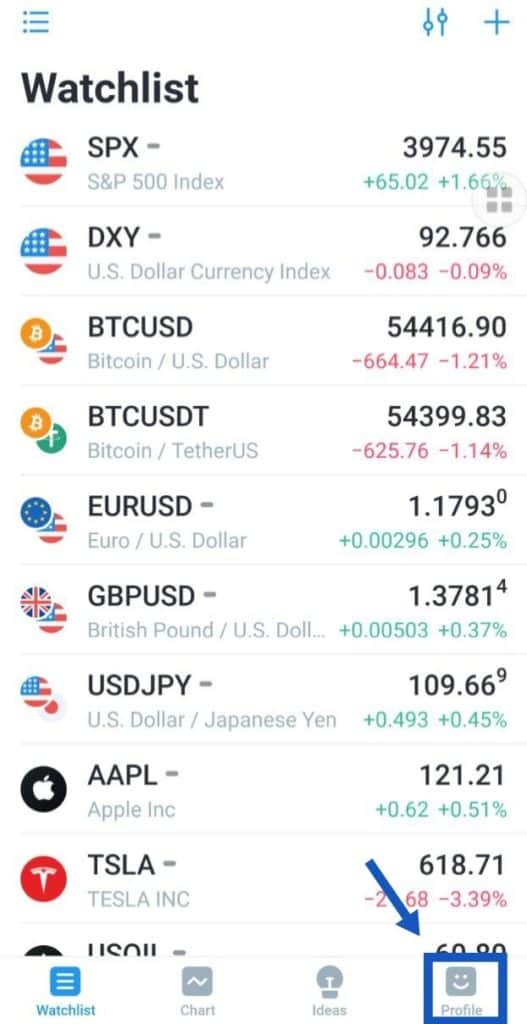
Step 3: Tap gear icon on the upper right corner (See blue box below).
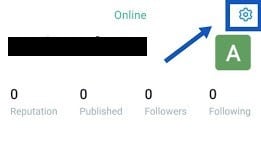
Step 4: Tap “Dark Theme” toggle switch
The theme will automatically apply the dark mode to all menus, charts and other elements of the app.
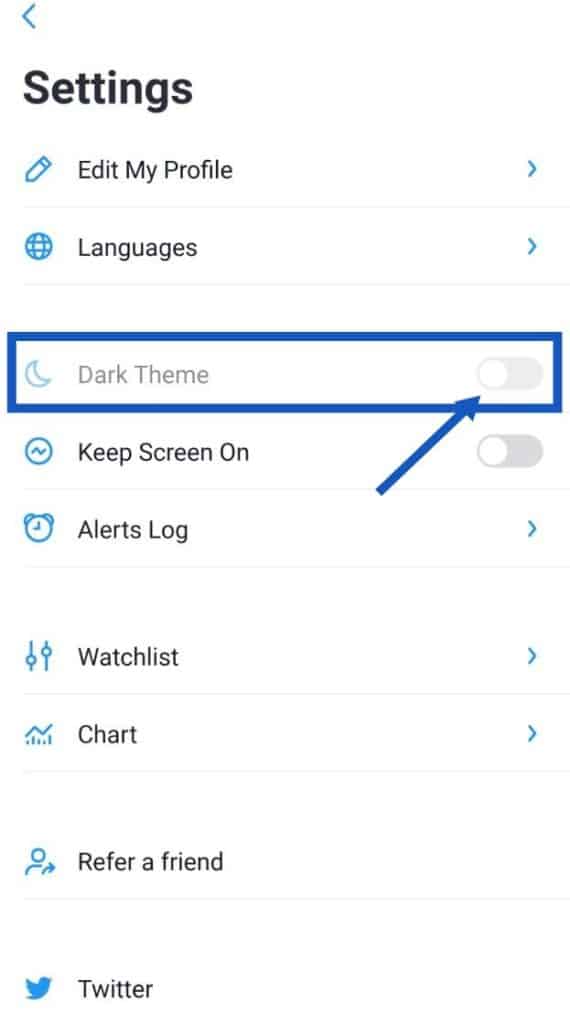
Step 5: Confirm change of interface
Once you click the toggle switch you will be asked to confirm if you want to change chart template as well as the user interface to dark mode. Note: Selecting ‘Yes’ will change all your chart settings to the default TradingView chart settings.
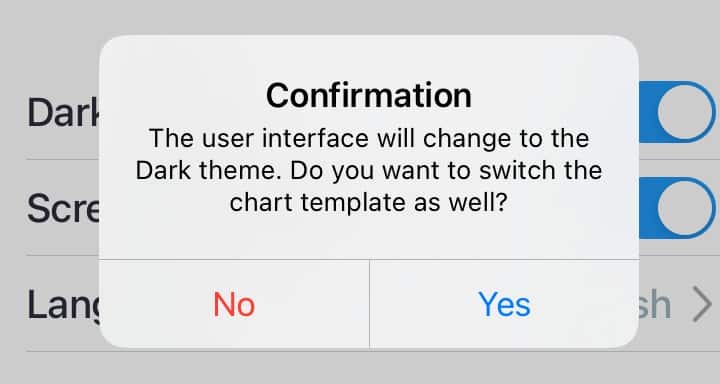
If you don’t want to loss your existing chart settings. Be sure to save your current settings as a template. To create a template following the steps in the ‘Creating a TradingView Template’ section above.
If you select ‘No’ in the confirmation window. Only the app interface will change to dark mode.
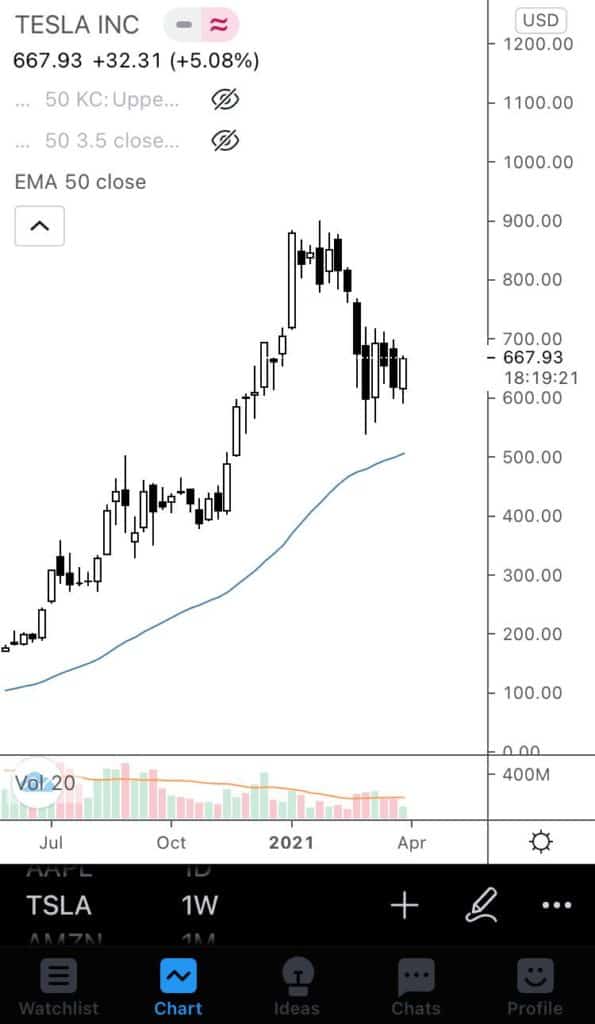
If you select ‘Yes’. App interface and chart setting will charge to the dark mode default settings.
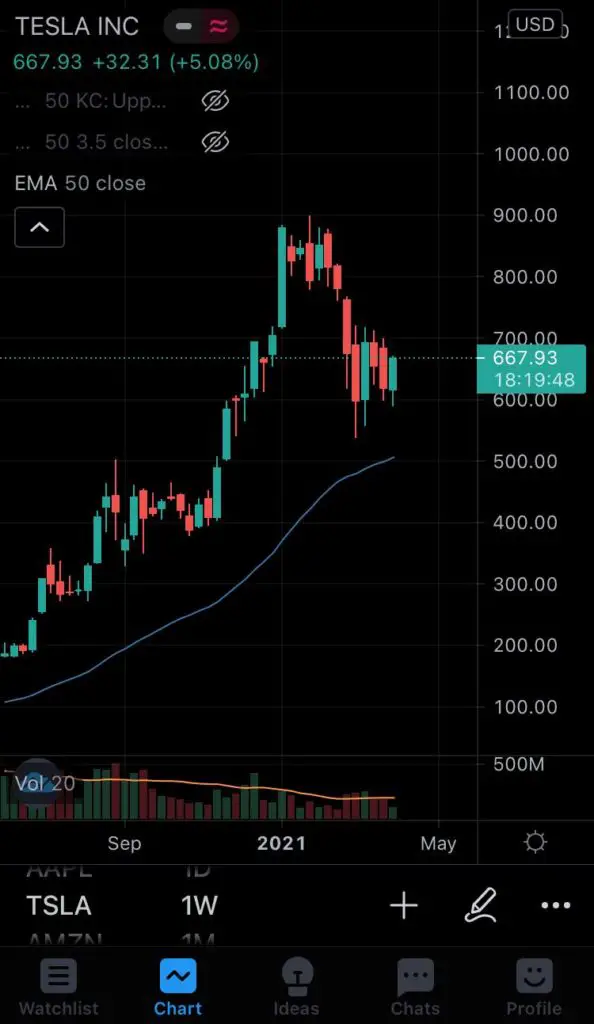
Reverting back to Light Theme
To revert back to light mode simply follow the steps 1 through five listed above. Except at step 4 toggle the switch back to light mode.
How to change TradingView background color
If you want to customize your TradingView charts beyond the Light or dark modes. Its possible to change TradingView background color to any color you like.
There are four preset chart color theme templates that come as default within TradingView. These are black, blue, grey and white. to access right click anywhere on a chart and hover over ‘color theme’. In the drop down menu is the list of default color themes (plus any templates you have previously created).
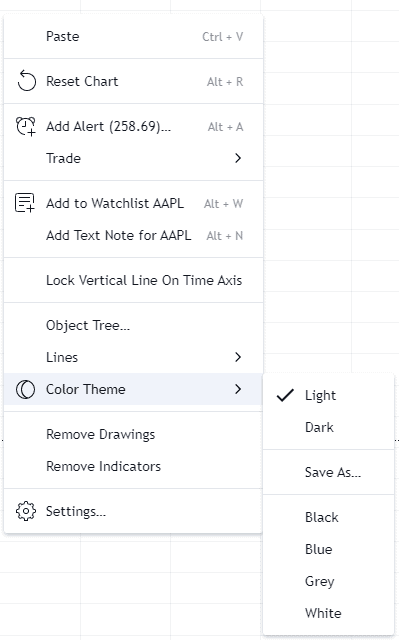
Creating a custom chart color theme
To create a custom TradingView background color theme follow the steps below:
Step 1: Click on the gear icon on the upper right

Step 2: Click on appearance on the left side of the window
Step 3: Click on Background > Select your color of choice for the color palette. To select an alternative color not included in the palette select the plus icon.

Step 4: Click OK
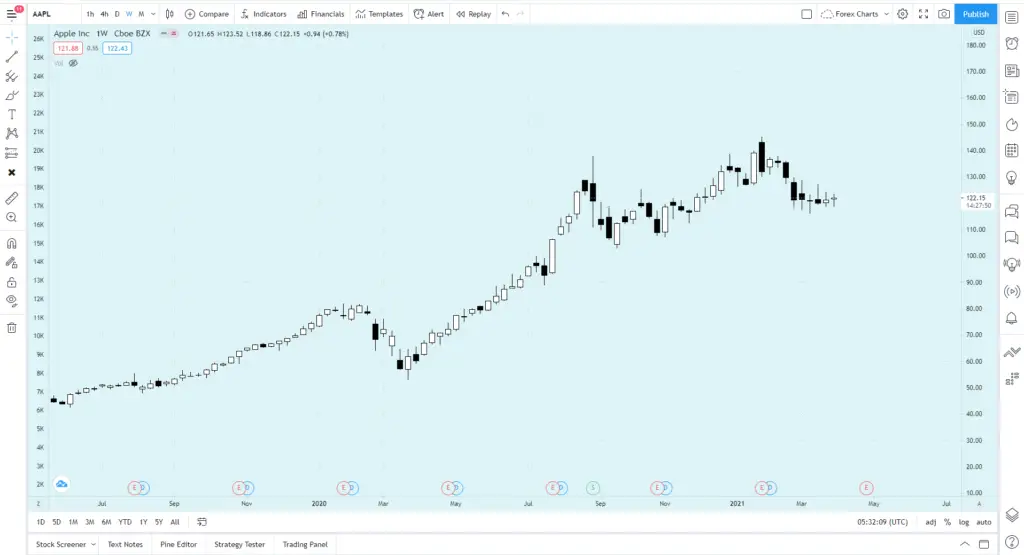
Customizing other chart settings
Within the same chart settings menu its possible to customize most chart attributes to suit your new color scheme. For example under the ‘Appearance’ tab you can customize chart grid lines, scale text and lines. Under the ‘Symbol’ tab you can customize chart bar body, border and wick colors.
Signup for a Essential, Plus+ or Premium TradingView subscription using the link. *New users get $15 towards a new plan.




